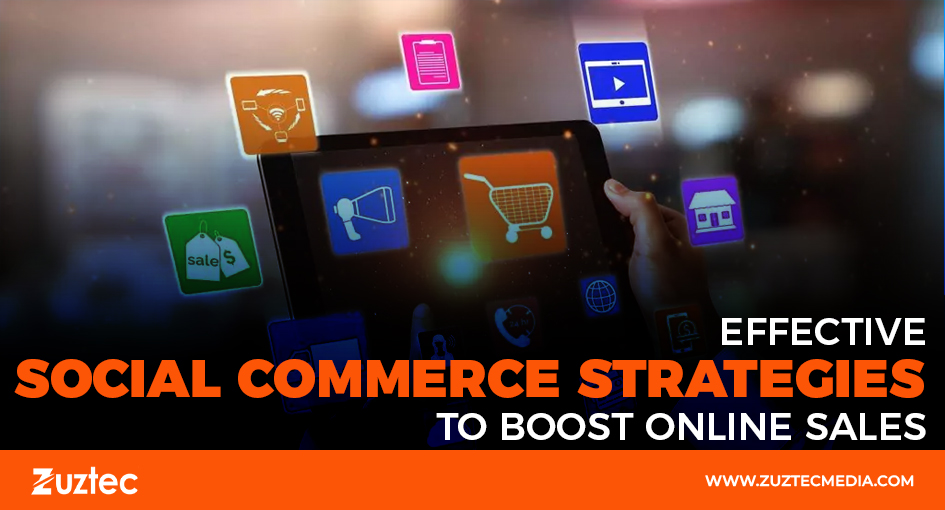
Effective Social Commerce Strategies To Boost Online Sales
As social media continues to evolve, it’s become more than just a place for connection and content sharing. Platforms like Instagram, TikTok, and Facebook are now powerful retail hubs, allowing users to shop directly through posts, videos, and live streams. This new way of shopping, known as social commerce strategies, blends e-commerce with social media engagement, opening up new avenues for brands to connect with customers and drive revenue.
The biggest advantage of social commerce is its seamless shopping experience. Users can discover a product, learn about it, and make a purchase, all without leaving the app. This reduces friction and increases the likelihood of impulse buying. These strategies enable businesses to take full advantage of this flow, ensuring their products are seen at the right time and in the right context.
When customers see others engaging with a product through likes, comments, or user-generated content, they’re more likely to trust it. Influencers and brand advocates also play a major role in enhancing product credibility and sparking interest among followers. Strategic collaborations can help businesses reach new and highly engaged audiences authentically.
From using data-driven targeting to launching exclusive social-only deals, the tools available today allow for deep customer engagement. The future of e-commerce is social, and brands that adapt to these new models are more likely to thrive in an increasingly competitive digital marketplace.
Social Commerce Strategies For Modern Businesses
These strategies are essential for businesses wanting to stay competitive in today’s retail environment. These approaches involve using social media platforms not only to market products but also to sell them directly to consumers. With millions of users engaging on social apps every day, these platforms offer a unique opportunity to meet customers where they already spend their time.
An effective social commerce strategy starts with choosing the right platform. For visual products like fashion or home decor, Instagram and Pinterest are ideal. TikTok works well for dynamic product demonstrations and viral challenges.
The next step is optimizing content for shopping. This includes tagging products in posts, creating shoppable videos, and setting up a storefront within the app. Many platforms now offer tools that make this easier than ever, like Facebook Shops or Instagram Checkout. These features allow for a streamlined purchase journey and reduce drop-offs caused by switching between apps or pages.
Consistency in posting and engagement is also vital. Brands should interact with followers, respond to questions, and use real-time features like live video to showcase products. This builds trust and creates an interactive shopping experience that can mimic in-store customer service.
Finally, leveraging user-generated content is a smart move. Encouraging customers to share their own photos or reviews with your product adds authenticity and helps convince new buyers. Featuring these posts on your feed or in ads can create a sense of community and further boost your brand’s reach.
How Personalization Drives Better Engagement
In the middle of a competitive digital market, personalization stands out as one of the most effective social commerce strategies. Consumers expect brands to understand their preferences and offer relevant suggestions. When businesses tailor product recommendations, ads, and content based on user behavior, it creates a more satisfying and persuasive shopping experience.
For example, if a user frequently interacts with skincare content, the algorithm can surface personalized product recommendations in their feed. This level of targeting increases conversion rates and enhances the overall customer journey.
Personalized experiences also include custom discount codes, birthday offers, or early access to new collections. These small gestures make customers feel valued and increase loyalty over time. Brands can even tailor messaging styles to different audience segments, using humor, exclusivity, or urgency depending on the user’s engagement history.
Incorporating short videos or carousels tailored to user interests can also improve retention and interaction. This content-first approach doesn’t feel overly promotional and fits naturally within the user’s browsing behavior. Social commerce is not just about selling—it’s about creating a relationship that encourages long-term interaction and trust.
The Role Of Influencers In Social Shopping
One of the most influential components in today’s digital retail space is the role of creators and influencers. People tend to trust recommendations from individuals they follow and admire more than they trust traditional advertising. Influencers help humanize brands and make products feel more relatable.
Brands are now forming long-term partnerships with content creators rather than just sponsoring one-off posts. This allows influencers to genuinely integrate products into their content, whether through daily routines, tutorials, or product reviews. When an influencer’s audience sees consistent and authentic use of a product, it significantly boosts credibility and sales potential.
It’s also important for businesses to choose the right influencers. Micro-influencers, who have smaller but highly engaged audiences, often yield better conversion rates than celebrities. Their followers see them as peers and are more likely to take their product endorsements seriously.
Conclusion: Why Social Commerce Is The Future Of Retail
The e-commerce landscape is evolving, and social commerce strategies are at the forefront of this change. As digital spaces become more integrated into everyday shopping habits, brands must adapt to meet consumers on platforms they already use. From personalized recommendations to influencer partnerships, social commerce enables a richer and more dynamic interaction between businesses and buyers.

